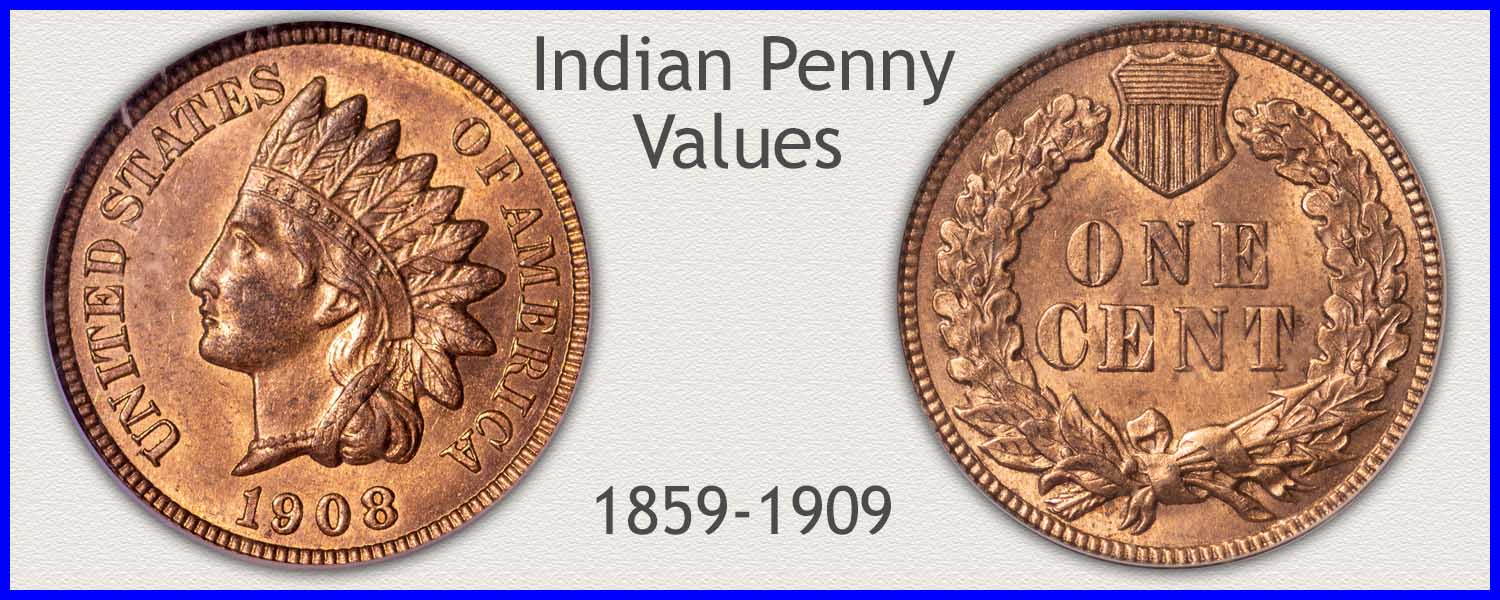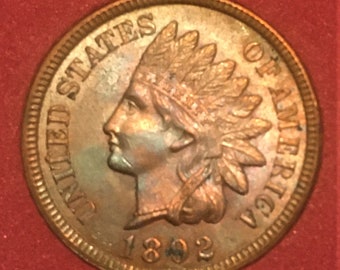1892 Indian Head Penny
Indian Head Penny Overview
- 1892 Indian Head Penny Value Chart
- 1892 Indian Head Penny Worth
- 1892 Indian Head Penny For Sale By Owner
- 1892 Indian Head Penny Mint Mark
- 1892 Us Indian Head Penny
The coin pictured, SKU # c05459, is the actual coin you will receive, if purchased. Indian Head Pennies (1859-1909) 1892 Indian Head Cent Good+ $2.99. Quantity + Add To.
The precursor to the well-known Lincoln cent, the Indian Head penny is beloved by collectors for its simplicity of design and its historical impact on coinage.
The Indian Head penny first appeared in 1859 as a new small cent piece that aimed to fix the problems of its short-lived predecessor, the Flying Eagle cent. Both coins were designed by Chief Engraver James B. Longacre.
Find great deals on eBay for indian head penny 1892. Shop with confidence. Minted for over 50 years, Indian Head cents are widely considered the most beautiful copper coins in American history. Introduced shortly before the War between the States in 1859, they were struck by the U.S. Mint until 1909. Designed by James Longacre, these historic cents were the nation's first coinage tribute to the noble, proud American.
The obverse of the Indian Head penny has a profile bust portrait of Miss Liberty in a Native American-style feather headdress, inspiring the inaccurate but popular misnomer “Indian Head.” Divided between the left and right fields is the legend “UNITED STATES OF AMERICA,” and the year of mintage is at the bottom.
The reverse of 1859 had the denomination “ONE CENT” inside a simple laurel wreath decorated at the base with a bow. This was altered permanently the following year. From 1860 onward, the wreath was made of oak leaves, and it was adorned with a shield at the top and a bunch of arrows at the bottom.
Both faces feature a denticled rim, a rim of small bumps, and the edge of the coin is plain.
As for the composition, the pennies struck from 1859 to early 1864 used a copper-nickel composition of 88% copper and 12% nickel with a mass of 4.67 grams.
In order to discourage hoarding (the value of nickel was rather high at the time), the coins began to be struck in a bronze composite of 95% copper and 5% tin and zinc in 1864. These bronze coins had a mass of 3.11 grams.
This new composition was used until the end of the series in 1909, the bicentennial of Abraham Lincoln’s birth and the introduction of the oft-collected Wheat penny.
History of the 1895 Indian Head Penny
In 1895 the country was still in a recession following the Panic of 1893. Nevertheless, the Indian Head penny still saw a return to regular production numbers.
38,341,574 cent pieces were struck in 1895, all of them in Philadelphia. Indian Head pennies would not be struck outside of Philadelphia until 1907, so this issue bears no mint mark.
Surviving examples from this issue are common in all grades below Full Red gem and are readily available to collectors.
Several die-punching varieties are known for the 1895 Indian Head penny, but the majority do not command extra premiums and do not have much demand among collectors.
This issue, being minted after 1864, is minted in the bronze composite, meaning that it is available in three colors: Brown, Red-Brown, and Full Red. This coloration is a result of how the copper tones with age.
Brown is the least desirable and most common color, whereas Red-Brown is more desirable, and Full Red is the most coveted color.
Full Red examples of this issue are rather scarce in higher grades and can increase the value of your coin to a high degree.
The best way to authenticate the color of your Indian Head cent is to have it professionally graded, but you can use the image below to get an idea of what each color should look like on your coin.
Valuing the 1895 Indian Head Penny
This issue is considered common, so most grades exhibit low values. However, high Uncirculated grades can bring fair premiums, especially if they show either Red-Brown or Full Red color.
In Brown coins, Good-4 to Very Good-8 grades are typically worth between $2 and $4. The value increases to $5.15 in Fine-12, $8.25 in Very Fine-20, $15 in Extremely Fine-40, $25 in About Uncirculated-50, and $41 in Uncirculated MS-60.
Uncirculated MS-63 pennies are valued at $67, and MS-65 coins may be worth as much as $165. Average proof strikes tend to be worth around $160.
1892 Indian Head Penny Value Chart
In Red-Brown, the values increase. These coins are worth $45 in MS-60, $125 in MS-63, and $450 in MS-65. MS-66 specimens carry a value of $775.
Full Red coins command the highest values. MS-60 examples bring $55, and the MS-63 grade jumps to $190. The value increases dramatically to $525 in MS-64, $900 in MS-65, and $2,300 in MS-66.
An MS-67 Full Red example commands the impressive value of $27,000. In 2006, such a coin sold for over $40,000!
If you think you may have a Full Red or even Red-Brown 1895 Indian Head penny, it is almost certainly worth the time and effort to have it professionally authenticated by a coin-grading service such as PCGS or NGC.
Coin Values Moving with Precious Metals: Up-Dated 2/8/2021: Gold $1813 Silver $26.90
Minimum 1890 Indian head penny value is within the price range of many collectors.
Because of this, it is one of the very popular and affordable US series to collect. Good news as it creates a large demand for your coin from those assembling sets.
A collecting demand that continues to get stronger for the better quality 1890 pennies. Hobbyist along with coin dealers are always searching for these old pennies in the best condition possible. If a close look at your coin finds details within the feathers this confirms higher 1890 Indian head penny value.

Pictured is a top quality example, the result of careful handling, this choice 1890 penny is easily worth over $40. Just below the value chart are images and descriptions to compare your coin, giving you an idea of how collectors view its condition.
| 1890 Indian Head Penny Value | ||||
|---|---|---|---|---|
| Condition of Coin | ||||
| Date | Good | Fine | Extremely Fine | Uncirculated |
| 1890 Indian Head Penny Value Updated | 2021 | |||
| 1890 | $1.80 | $3 | $11 | $42 |
1890 Pennies are Collectible in all Conditions
Pictured is an exceptional 1890 penny obviously housed in elite collections since minted. Over the years only transferring ownership from one top quality set to the next. To the credit of all the collectors involved they maintained this coin in gem condition.
Seldom are pennies of this condition rarity offered to the market. When it became available in a David Lawrence rare coin auction many specialist turned out to place bids. The final price to add a gem 1890 Indian penny to their collection was $799.

A pleasing original fiery red and yellow gold still covers both the obverse and reverse. Adding to its top quality status is the almost total absence of marks on the coin. Obviously the luster and surface qualities were a perfect match to one collector. Values of pristine 1890 pennies often reach into the hundreds of dollars, however your 1890 in any condition is still considered a collectible.
Added Value Depending on Condition
Judging a coin’s state of preservation is known as 'grading' by dealers and collectors. How well your coin has survived and the amount of wear determines value. Noticeable features separate the varying degrees of possible wear, the differences are highlighted below.
Uncirculated: All the characteristics of a new penny remain. The original mint luster is unbroken with no wear to the coin. Toning to a light brown is possible however rotating the coin under a light reveals undisturbed luster underneath. Examine the highest areas for signs of wear. The first to exhibit abrasions is hair above the eye and curls behind her neck.
Extremely Fine: Sharply defined details, including the minor elements, define an Indian penny in 'extremely fine' condition. Looking closely at the head band the letters in Liberty are fully separated from the defining lines of the band. Wear is present, however all parts are bold. Your coin should stand out as very pleasing to the eye and highly detailed.

Fine: Noticeable are parts of the hair and headband have worn to the point of merging. Feather details are missing at the ends. Her cheek no longer is rounded. Despite this moderate wear your 1890 penny still has a pleasing look.
Good: Heavy wear has reduced the portrait to almost a flat silhouette. The headband and hair above the eye are no longer separated, hair curls along her neck and ribbon are merged. Despite its worn appearance your coin is popular among collectors and 1890 Indian head penny value indicates a strong demand.
Coin Values CoinStudy Articles
Date by Date
In Depth Indian Penny Value
1859 to 1882
1859 | 1865 | 1871 | 1877 |
1860 | 1866 | 1872 | 1878 |
1861 | 1867 | 1873 | 1879 |
1862 | 1868 | 1874 | 1880 |
1863 | 1869 | 1875 | 1881 |
1864 | 1870 | 1876 | 1882 |
Date by Date
In Depth Indian Penny Value
1883 to 1909
1892 Indian Head Penny Worth
1883 | 1890 | 1897 | 1904 |
1884 | 1891 | 1898 | 1905 |
1885 | 1892 | 1899 | 1906 |
1886 | 1893 | 1900 | 1907 |
1887 | 1894 | 1901 | 1908 |
1888 | 1895 | 1902 | 1909 |
1889 | 1896 | 1903 |
Common dates are now worth one dollar each. You have a popular coin, everyone understands and has heard of the value of an Indian Head penny. Many collectors are building collections and putting a heavy demand on very rare dates and better condition coins. Compare your 1890 Indian head penny value to other dates on the values chart.
Penny values listed for US cents. From the earliest Half and Large cents, to Indian head pennies to the popular Wheat cents of 1909 to 1958.
1892 Indian Head Penny For Sale By Owner
Match your coins to the grading images, determine their grade and find an accurate value on the charts. Some of these old pennies have amazing values.
1892 Indian Head Penny Mint Mark
★Coin Values Discovery finds... 1890 Indian Head Penny Value and...
1892 Us Indian Head Penny
All old US coin values. The home page is an excellent index, quickly leading to the major coin series. From Cents to Gold. Each with grading images and value charts.